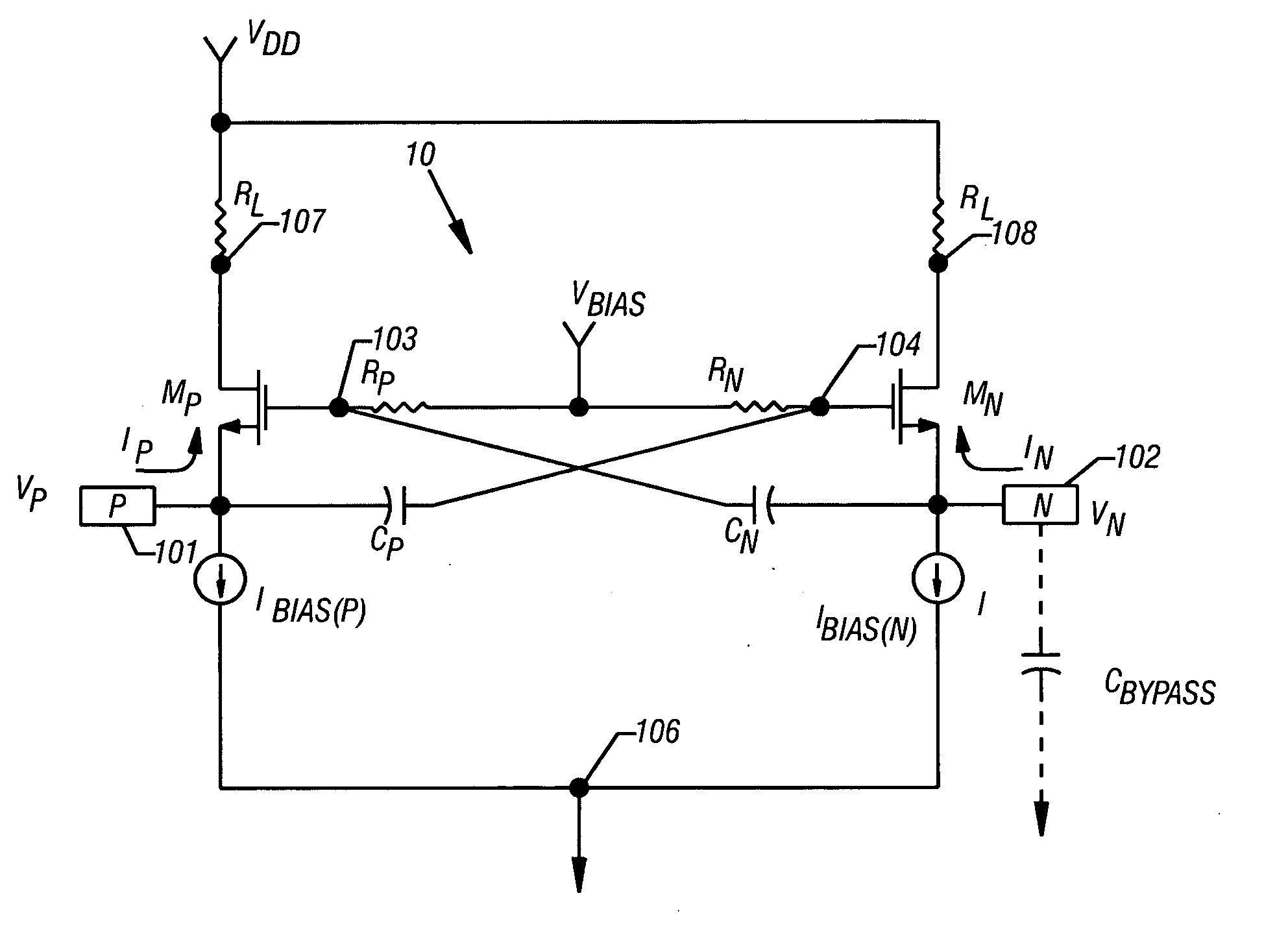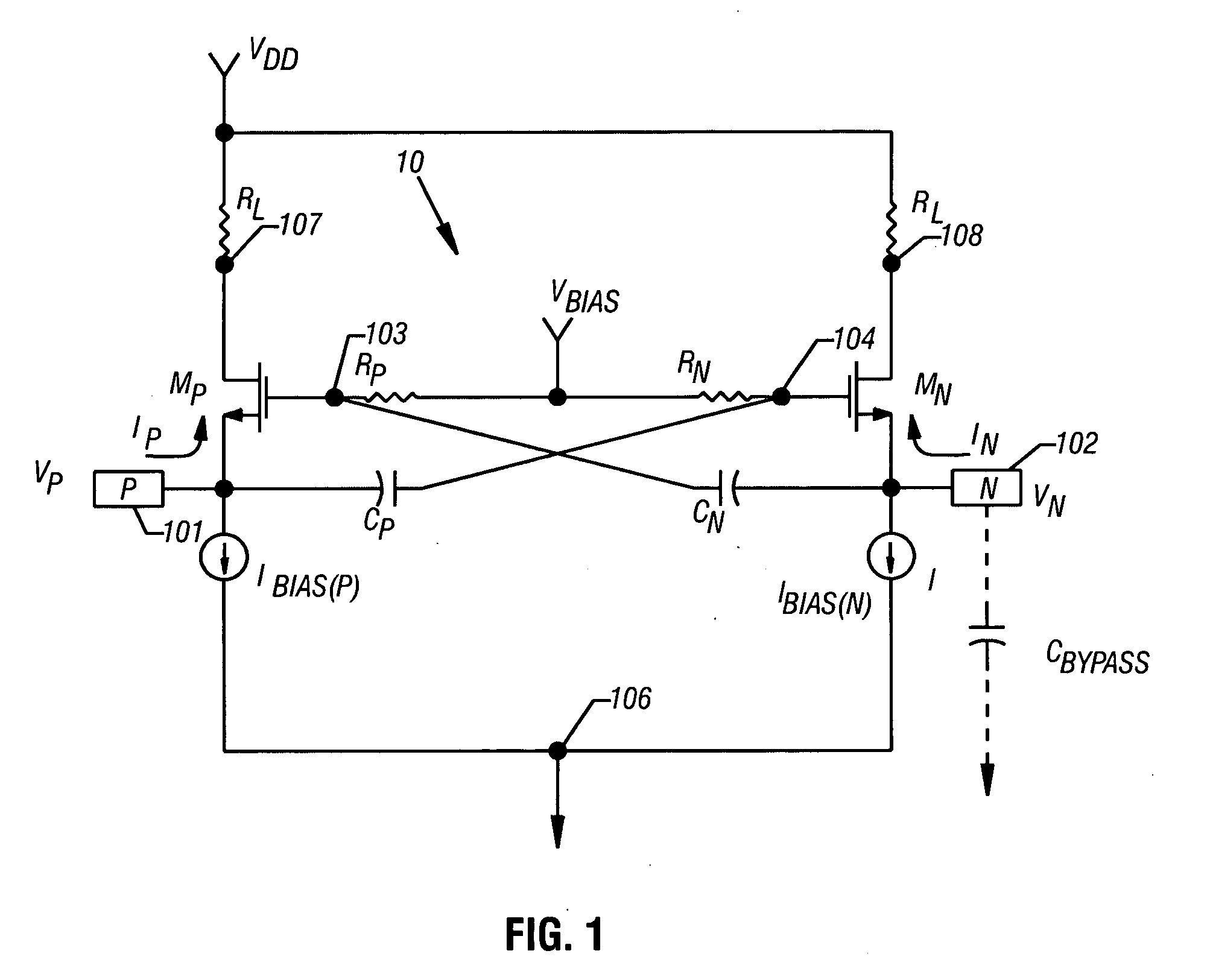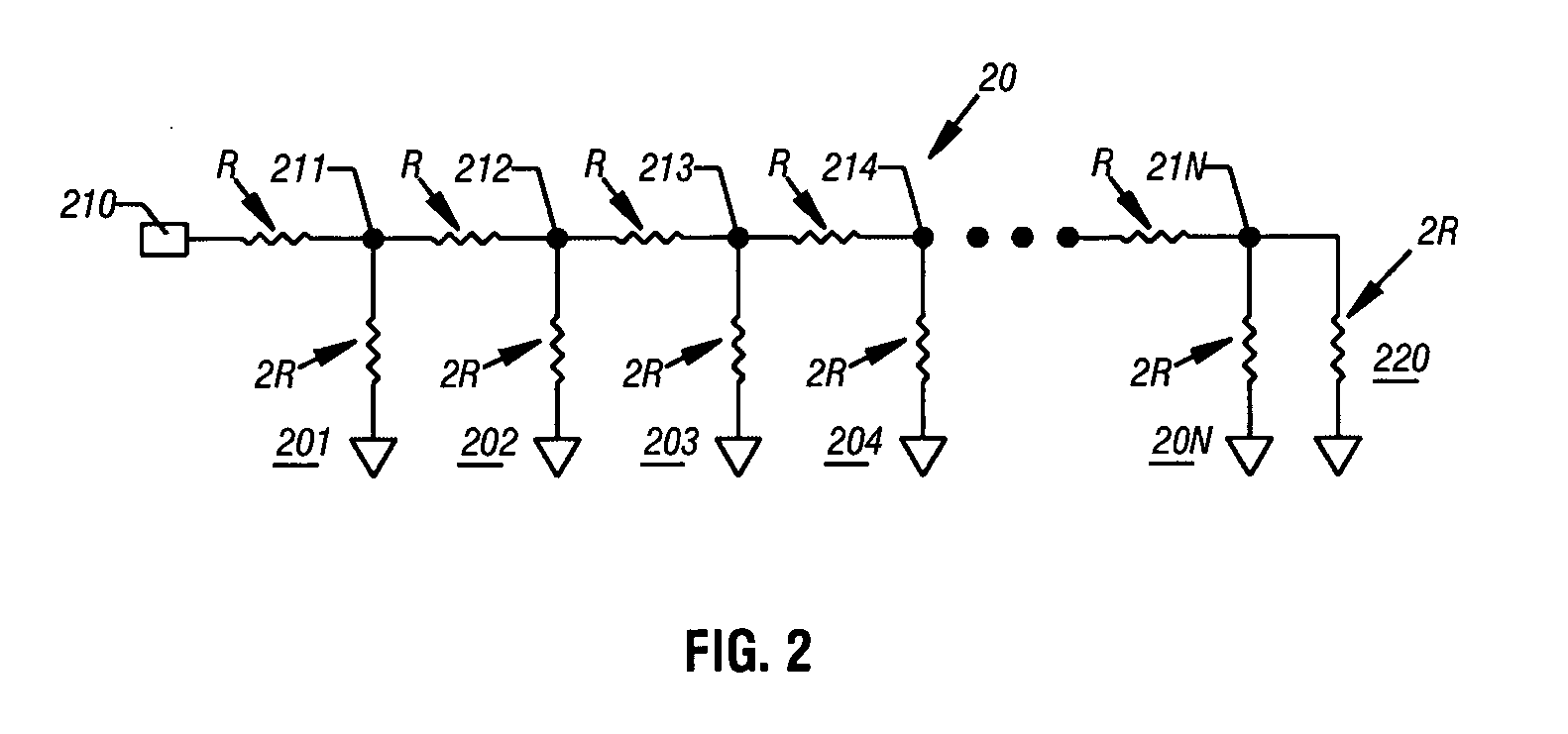Differential/single-ended input stage
a single-ended input and input stage technology, applied in differential amplifiers, amplifiers with semiconductor devices/discharge tubes, amplifier details, etc., can solve the problems of low output power, low output power, and inability to provide an ideally flat passband, and achieve constant gain
- Summary
- Abstract
- Description
- Claims
- Application Information
AI Technical Summary
Benefits of technology
Problems solved by technology
Method used
Image
Examples
Embodiment Construction
[0019] For an understanding of the subject differential / single-ended input stage, reference may be had to the following Detailed Description, including the appended claims, in connection with the above-described Drawings.
[0020] The invention instantiates a technique to selectably control the input stage of an IC device for either single-ended or differential operation. That is, the device is operable to accept either a differential or single-ended input signal and provide a differential output signal to a succeeding stage. In one embodiment, selection is effected by the connection of a capacitor to an input terminal. Further, the input stage is designed so that the gain of the input stage remains constant with respect to single-ended or differential operation. Accordingly, embodiments are applicable to all forms of circuitry that suggest a need to convert, or accept, either single-ended or differential signals. In single-ended operation, the circuit provides substantially the same ...
PUM
 Login to View More
Login to View More Abstract
Description
Claims
Application Information
 Login to View More
Login to View More - R&D
- Intellectual Property
- Life Sciences
- Materials
- Tech Scout
- Unparalleled Data Quality
- Higher Quality Content
- 60% Fewer Hallucinations
Browse by: Latest US Patents, China's latest patents, Technical Efficacy Thesaurus, Application Domain, Technology Topic, Popular Technical Reports.
© 2025 PatSnap. All rights reserved.Legal|Privacy policy|Modern Slavery Act Transparency Statement|Sitemap|About US| Contact US: help@patsnap.com



